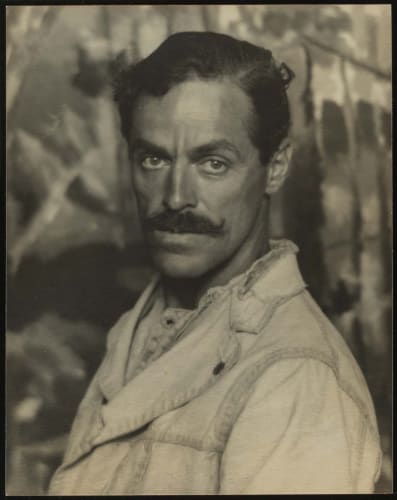Edwin Dickinson 1891-1978
An artist staunchly independent from prevailing modes of expression and a complex personality, Edwin Dickinson seems to have explored a wide range of styles based on his own intuition and dreams. Born in Seneca Falls, New York, and after moving to Buffalo when he was 6, he began drawing both at home and in school. From 1910 to 1913, he moved to New York and studied art at various art schools, including Pratt Institute and the Art Students League under William Merritt Chase, Charles Hawthorne, and Frank DuMond. Dickinson continued his training at The National Academy of Design, and in the summer of 1912, studied with Hawthorne at the Cape Cod School of Art in Provincetown, Massachusetts. After the death of his brother in 1913, the young artist decided to return home and finish his studies at the Buffalo Fine Arts Academy. Dickinson served in the Navy during World War I for two years, beginning in 1917. After his discharge in December 1919, he traveled in Europe for a time; the trip introduced him to the works of artists such as El Greco and helped further define his personal artistic goals.
He returned to America and spent the next several years dividing his time between visiting family and living in Provincetown. He worked continuously, selling works every now and then, but not yet gaining popularity. In 1926, he met his future wife Frances “Pat” Foley whom he married in 1928. The two spent much of their time in Provincetown, with Dickinson teaching periodically, including at the Provincetown Art Association. Their daughter Helen was born in 1931, their son Constant in 1933. The end of 1937 brought with it a few months of European travel for the Dickinsons. On November 20th, they headed to Paris for a brief stay and then traveled southward to Sanary-sur-Mer, a town on the Mediterranean coast. With World War II on the horizon, they left France in 1938 and returned to the United States.
Dickinson’s career struggled for a few more years, but by the 1950s his art had finally made traction. Willem and Elaine de Kooning became close friends and were pivotal to expanding Dickinson’s network. He was given membership at the National Academy of Design and awards from various associations, including the Ford Foundation, and his work was widely exhibited. He taught at the Arts Students League and Cooper Union from the mid-1940s to the mid-1960s, and influenced numerous other contemporaries including Jack Tworkov, Robert Motherwell, Hans Hofmann, and Jackson Pollock.
The last few decades of his life were spent traveling through Europe with his wife, visiting his children and grandchildren, and doing his best to keep up with the now-increased demand for his work. As he began to suffer from an increasing number of health problems, he painted less but continued to travel, always bringing his sketchbook. By 1970, he had unknowingly developed Alzheimer’s, and the last six years of his life were spent in a declining state until his death in June of 1976.

